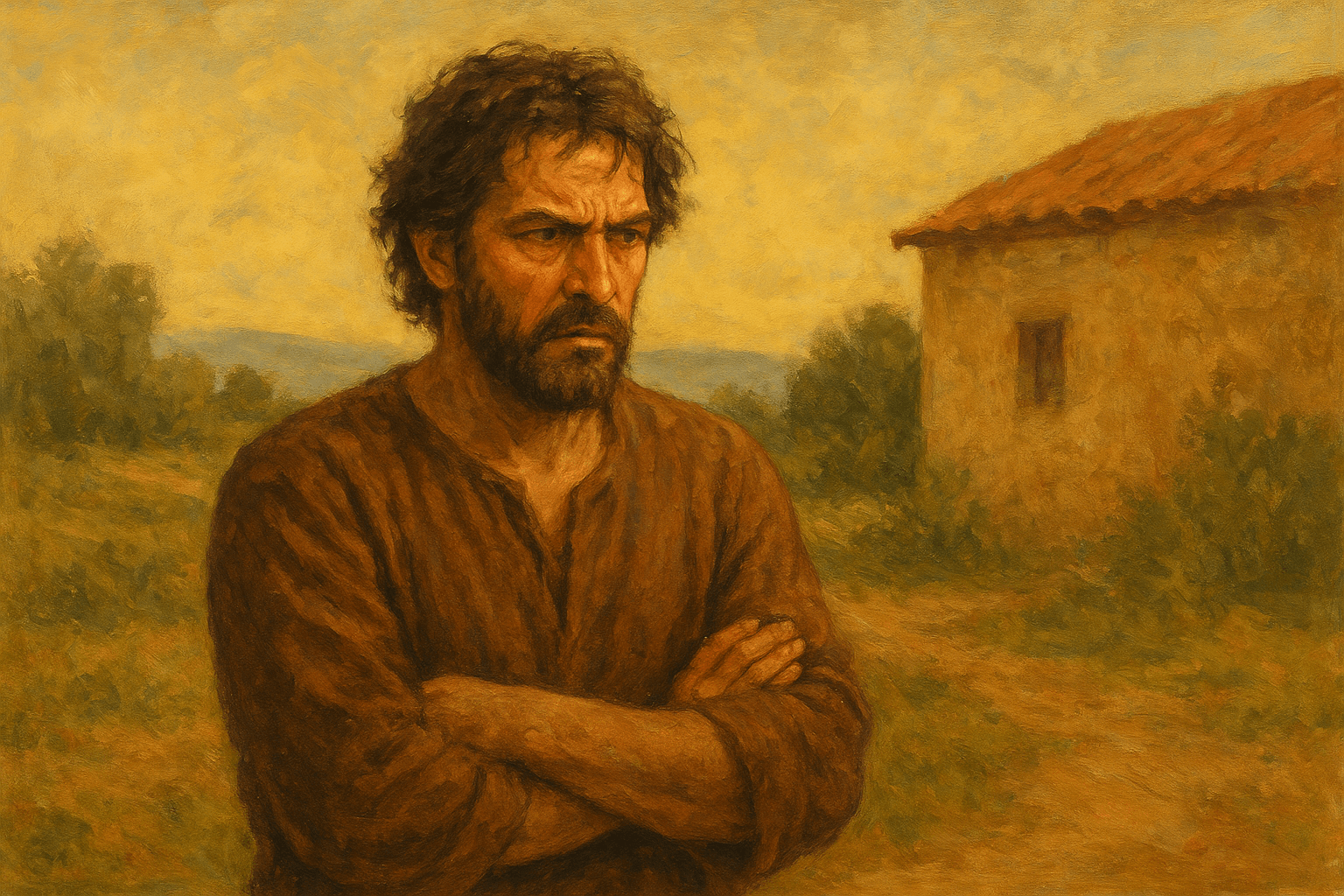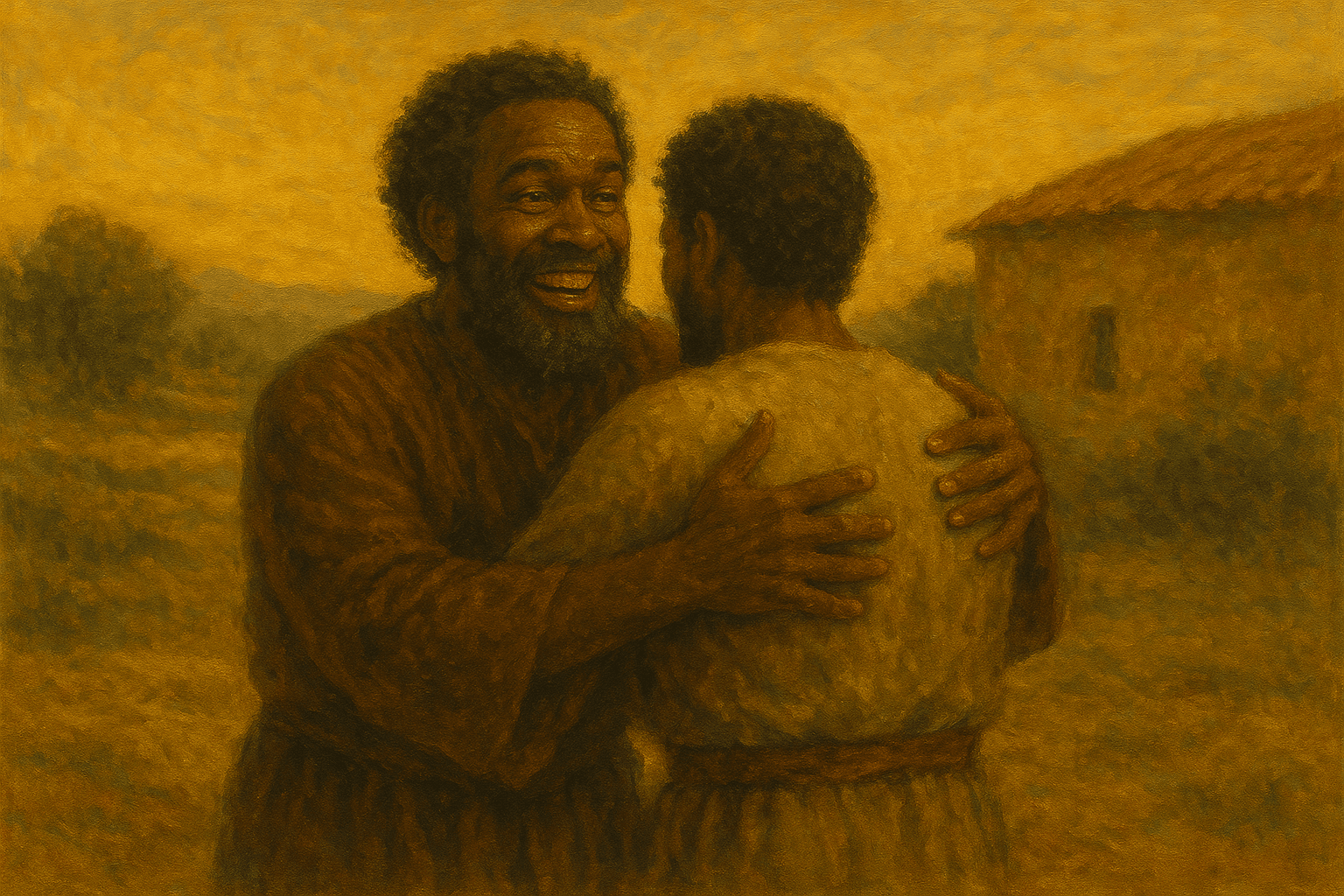The Prodigal Son: Works vs Grace

Luke 15 was Jesus explaining the Character of God. The audience of this chapter included sinners, tax collectors, Pharisees, and teachers of the Law. They were questioning why Jesus was fellowshipping with sinners. The first part was the parable of the Lost Sheep (Luke 15:3–7). The second part was the parable of the Lost Coin (Luke 15:8–10). The last part, and our main focus, is the parable of the Lost Son (Luke 15:11–31).
The Main Character of the Parable of the Lost Son
Often because this parable is called the “Prodigal Son” or the “Parable of the Lost Son,” we assume the main character is the prodigal. But when you consider the entire chapter — and the fact that Jesus was responding to questions about His character — it is clear that the Father is the true main character of the parable.
The Pharisees and teachers of the Law believed Jesus should not associate with sinners. They mischaracterized who He was. At the very least, they saw Jesus as a holy man connected to God. But they did not fully grasp that Jesus is God. Through these parables, Jesus revealed His character and the character of His Father.
We know that when you see Jesus, you have seen the Father. Jesus is the express image of the Father:
“The Son is the radiance of God’s glory and the exact representation of his being, sustaining all things by his powerful word. After he had provided purification for sins, he sat down at the right hand of the Majesty in heaven.” (Hebrews 1:3, NIV)
“Jesus answered: ‘Don’t you know me, Philip, even after I have been among you such a long time? Anyone who has seen me has seen the Father. How can you say, ‘Show us the Father’?” (John 14:9, NIV)
It is also no coincidence that Jesus came to introduce God as Father. If you read the Old Testament, God is often portrayed in ways that people misunderstood — like a distant king or harsh ruler. Jesus came to correct those distorted views and reveal the truth: God is Father. He is the main character of this parable.
Who is the Prodigal Son?
The younger son demanded his inheritance, left home, and wasted everything in reckless living. When famine struck, he was reduced to feeding pigs and longing to eat their food. In desperation, he realized his father’s servants lived better than him. Broken and repentant, he decided to return home, confess his sin, and ask to be treated as a servant (Luke 15:12–20).
Possible Profile of the Prodigal Son:

- Impulsive and naïve.
- Entitled.
- Thought he had it all figured out, but didn’t see the famine coming.
- Struggled with separation anxiety, masked as independence.
- Equated freedom with indulgence.
- Craved acceptance and significance but sought it in the wrong places.
- Knew his father was wealthy and would not completely abandon him.
- Believed his father would accept him back, but underestimated the depth of his father’s love.
- Thought he would return as a servant, not realizing he will always. be a son.
Who is the Older Brother?
The older son returned from the field and, hearing music, discovered his brother had come home and was being celebrated. Angry and unwilling to join the feast, he complained to his father that after years of loyal service he had never been rewarded. He resented that his reckless brother was honored.
Possible Profile of the Older Brother

- Resentful, bitter, with unmet expectations.
- Suppressed his emotions for years while performing dutifully.
- Found his sense of worth in achievement and recognition.
- Obeyed outwardly but felt unseen inwardly.
- His anger revealed sibling rivalry and resentment toward perceived favoritism.
- Judgmental.
- Lacked love — he didn’t care about his brother’s restoration.
- Condescending: “But when this son of yours…” (v.30).
- Questioned God's grace for his brother
- Did not understand his father’s character.
- Did not fully grasp his position in his father’s house: “My son, you are always with me, and everything I have is yours” (v.31).
The Profile of the Father
“But while he was still a long way off, his father saw him and was filled with compassion for him; he ran to his son, threw his arms around him and kissed him.” (Luke 15:20)
Jesus used this parable to answer the question that has troubled people for generations — the question of works vs. grace. Understanding the Father’s character helps us navigate it.
The prodigal son knew his father was kind, but he underestimated his love. He thought he could return only as a servant. But the Father would never accept his child as a slave — because he was always a son.
The older brother, meanwhile, represents work-based Christianity. He stayed in his father’s house but lost sight of his identity. Many of us do the same — thinking we must work to earn salvation, work to keep salvation, or work to maintain relationship with God. This is Christianity built on “doing,” not on understanding the grace of God.This is due to the lack of understanding of the Grace of God.

Grace is not about what the younger son failed to do, nor about what the older son was doing. Grace is the very character of God. The father loved both sons consistently — the prodigal when he was far away, and the older son when he was close yet mischaracterising Him. His compassion was not earned, it was given.
Beyond being happy to see His son, the Father had COMPASSION on his condition. The Father had already forgiven him before the son said any word. The Pharisees asked why Jesus dined with sinners. His answer was this parable. And His answer was one word: Grace.
I pray that we continue to understand the debt of God's grace available for us.